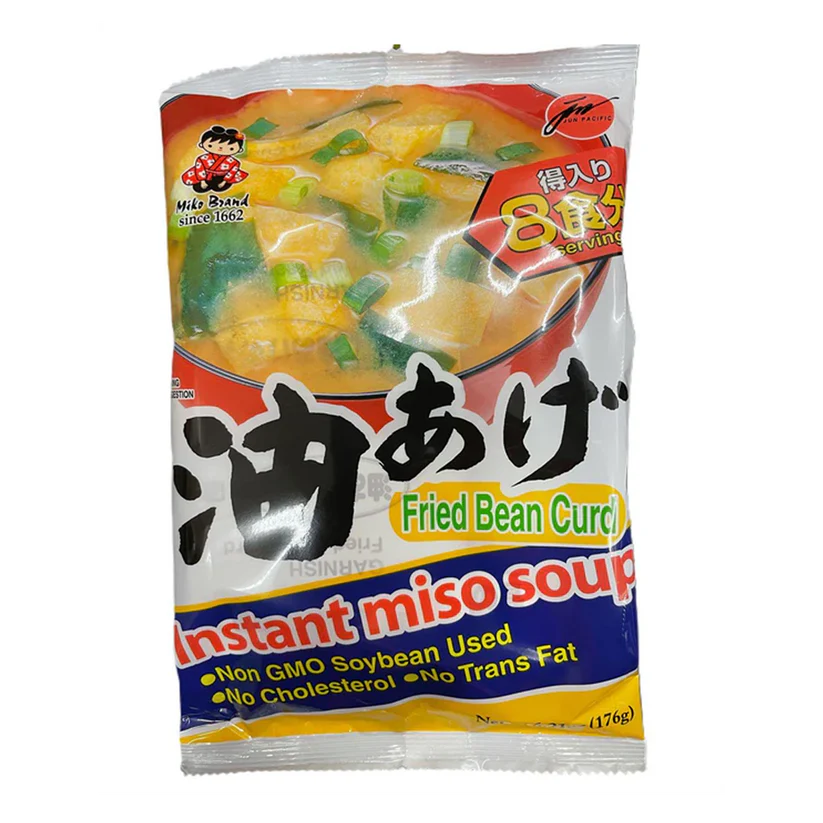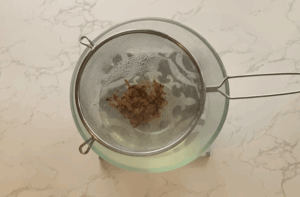How to Make Authentic Miso Soup at Home

Miso Soup: A Cozy Taste of Japan
There’s something comforting about a warm bowl of miso soup. This simple miso soup recipe uses dashi, tofu, wakame, and miso paste to create a light but flavorful Japanese soup that’s ready in minutes. Whether you’re making a homemade miso soup for breakfast, lunch, or dinner, this dish is a staple in many Japanese homes.
Traditionally, miso soup is made with a flavorful broth called dashi. Dashi forms the heart of the soup, giving it that rich, umami depth.
You can make your own dashi from scratch (it’s easier than you think!), You can learn how to make it here or you can use convenient dashi powder for busy days.
Either way, homemade miso soup tastes so much better than anything from a packet — warm, savory, and filled with love.
🥢 What is Dashi?
Dashi is a light Japanese stock typically made from kombu (dried kelp) and katsuobushi (dried bonito flakes).
It brings out the natural umami flavor that makes Japanese soups, noodles, and simmered dishes so special.
✅ If you have time, making your own dashi is simple and creates the best flavor.
✅ If you’re short on time, instant dashi powder is a perfectly fine shortcut — many home cooks in Japan use it too!

🥢 Quick Miso Soup Packets: A Part of Everyday Life in Japan
In Japan, instant miso soup packets are a beloved part of daily life.
They’re not just for convenience — they’re a way to bring a little warmth and comfort into busy days.
Many people keep a few packets at work or tuck them into their homemade lunchboxes (bento).
Just adding a cup of hot miso soup can elevate a simple lunch, making it feel more nourishing and satisfying.
Even if you usually make homemade miso soup, having instant packets on hand is completely normal — and sometimes feels like a small act of self-care during a hectic day.

🛒 Ingredients for Miso Soup
Here’s everything you’ll need:
- 3 cups dashi stock (homemade or from powder)
- 2–3 tablespoons miso paste (white miso, red miso, or a mix)
- ½ block silken tofu or firm tofu (cut into small cubes)
- 1–2 tablespoons wakame seaweed (rehydrated if dried)
- 2–3 tablespoons thinly sliced green onions (scallions)
- Aburaage (fried tofu pouch strips)
Optional extras:
- Mushrooms (like shiitake or enoki)
- Spinach or other greens
- onion
- carrot
- daikon
This miso soup recipe is incredibly versatile — you can customize it with seasonal vegetables, clams, or mushrooms depending on your preference.
🍲 How to Make Miso Soup (Step-by-Step)
- Prepare your dashi:
- If using homemade, have your freshly made kombu and bonito stock ready.
- If using dashi powder, dissolve the recommended amount into hot water according to the package instructions.
- Heat the dashi:
Pour the dashi into a small pot and gently heat over medium heat. Do not boil — keep it at a gentle simmer. - Add tofu and Abraage
Gently stir in the cubed tofu and avuraage. Let them warm through for about 2–3 minutes. - Dissolve miso paste
Turn off the heat. Scoop out a small ladle of hot broth and dissolve the miso paste in it using a small strainer or spoon. Stir the miso back into the pot. - AAdd wakame
Add the rehydrated wakame at the very end, just before serving, as it cooks quickly in the hot broth. - Final touches
Serve hot and garnish with sliced green onions if desired. Avoid boiling after adding miso.

🌸 Tips for Perfect Miso Soup
- Don’t boil the miso. Always turn off the heat before adding miso paste.
- Adjust the miso amount to your taste — some people like it lighter, some like it rich and salty.
- Use good quality miso if you can — it makes a big difference in flavor.
- Small additions make it fun! Try adding different toppings like mushrooms, spinach, or even a poached egg.
🥢 What Kind of Miso Should I Use?
- White miso (shiro miso): Mild, slightly sweet flavor. Great for light soups.
- Red miso (aka miso): Stronger, saltier, more fermented taste. Delicious if you like bold flavor.
- Mixed miso (awase miso): A blend of white and red — balanced and very versatile.
You can experiment and find your favorite!
🛍 Shortcuts: Using Dashi Powder
Busy day?
Using dashi powder makes homemade miso soup a 10-minute project.
Just remember:
- Choose a good brand with simple ingredients.
- Taste the broth before adding miso — dashi powder can vary in saltiness.
🌟 Why You’ll Love Making Miso Soup at Home
- It’s easy and quick — perfect for a cozy meal anytime.
- It’s customizable — add your favorite vegetables, greens, or tofu.
- It’s healthy and nourishing — full of probiotics and gentle flavors.
- It tastes authentic — better than instant soups from the store!
Looking for the perfect companion to your miso soup?
Pair it with a bowl of steamed rice, Agedashi Tofu, or my comforting Tebamoto-ni — simple dishes that round out a wholesome Japanese meal.

Authentic Japanese Miso Soup (味噌汁)
Ingredients
- 3 cups dashi stock (homemade or power-based)
- 2 – 3 tbsp miso paste depending on your miso pate
- 1/2 block silken or firm tofu, cubed
- 1 tbsp dried wakame (rehydrated in water)
- 1/2 sheet aburaage
- 1 spring onion, finely sliced
Instructions
Make the dashi
- repare 2 cups of dashi stock using homemade katsuo dashi or dashi powder dissolved in hot water.

Heat the soup base
- Pour the dashi into a small saucepan and bring to a gentle simmer over medium heat.

Add tofu
- Gently add cubed tofu and sliced aburaage to the pot. Simmer for 1–2 minutes — do not boil

Dissolve miso paste
- Turn off the heat. Scoop out a small ladle of hot broth and dissolve the miso paste in it using a small strainer or spoon. Stir the miso back into the pot.

Add wakame
- Add the rehydrated wakame at the very end, just before serving, as it cooks quickly in the hot broth.
Final touches
- Serve hot and garnish with sliced spring onions if desired. Avoid boiling after adding miso.

Notes
💡 Tips
- Don’t boil miso — it loses flavor and aroma if overheated.
- Use soft tofu for delicate texture, or firm if you like more bite.
- Dried wakame expands a lot — a little goes a long way!
- Try adding mushrooms, daikon, or seasonal vegetables to make it heartier.
